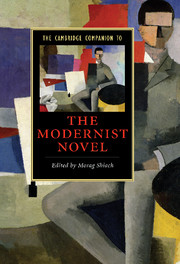14 results
Martyn Lyons. The Typewriter Century: A Cultural History of Writing Practices. Studies in Book Print and Culture. Toronto: University of Toronto Press, 2021. Pp. 276. $135.00 (cloth).
-
- Journal:
- Journal of British Studies / Volume 61 / Issue 2 / April 2022
- Published online by Cambridge University Press:
- 04 May 2022, pp. 521-523
- Print publication:
- April 2022
-
- Article
- Export citation
Contributors
-
-
- Book:
- The Cambridge Companion to the Bloomsbury Group
- Published online:
- 05 June 2014
- Print publication:
- 26 May 2014, pp xi-xiv
-
- Chapter
- Export citation
4 - Domestic Bloomsbury
- from Part II - Everyday Life
-
-
- Book:
- The Cambridge Companion to the Bloomsbury Group
- Published online:
- 05 June 2014
- Print publication:
- 26 May 2014, pp 57-70
-
- Chapter
- Export citation
12 - ‘Pleasure too often repeated’: Aldous Huxley's Modernity
-
-
- Book:
- The Modernist Party
- Published by:
- Edinburgh University Press
- Published online:
- 05 April 2014
- Print publication:
- 05 March 2013, pp 210-227
-
- Chapter
- Export citation
39 - Beyond autonomy: political dimensions of modernist novels
-
-
- Book:
- The Cambridge History of the English Novel
- Published online:
- 28 January 2012
- Print publication:
- 12 January 2012, pp 629-644
-
- Chapter
- Export citation
KEY NOVELISTS
-
- Book:
- The Cambridge Companion to the Modernist Novel
- Published online:
- 28 July 2007
- Print publication:
- 19 April 2007, pp -
-
- Chapter
- Export citation

The Cambridge Companion to the Modernist Novel
-
- Published online:
- 28 July 2007
- Print publication:
- 19 April 2007
Further reading
-
- Book:
- The Cambridge Companion to the Modernist Novel
- Published online:
- 28 July 2007
- Print publication:
- 19 April 2007, pp 238-242
-
- Chapter
- Export citation
Reading the modernist novel: an Introduction
-
-
- Book:
- The Cambridge Companion to the Modernist Novel
- Published online:
- 28 July 2007
- Print publication:
- 19 April 2007, pp 1-14
-
- Chapter
- Export citation
Index
-
- Book:
- The Cambridge Companion to the Modernist Novel
- Published online:
- 28 July 2007
- Print publication:
- 19 April 2007, pp 243-249
-
- Chapter
- Export citation
Frontmatter
-
- Book:
- The Cambridge Companion to the Modernist Novel
- Published online:
- 28 July 2007
- Print publication:
- 19 April 2007, pp i-xx
-
- Chapter
- Export citation
29 - Nation, region, place: devolving cultures
- from PART FOUR - POST-WAR CULTURES, 1945–1970
-
-
- Book:
- The Cambridge History of Twentieth-Century English Literature
- Published online:
- 28 March 2008
- Print publication:
- 06 January 2005, pp 528-544
-
- Chapter
- Export citation
5 - Work and selfhood in Lady Chatterley’s Lover
- from Part 1 - Texts
-
-
- Book:
- The Cambridge Companion to D. H. Lawrence
- Published online:
- 28 May 2006
- Print publication:
- 28 May 2001, pp 87-102
-
- Chapter
- Export citation
Adrian Kiernander Ariane Mnouchkine and the Théâtre du SoleilCambridge: Cambridge University Press, 1993. 172 p. £35.00. ISBN 0-521-36139-7.
-
- Journal:
- New Theatre Quarterly / Volume 10 / Issue 38 / May 1994
- Published online by Cambridge University Press:
- 15 January 2009, p. 201
- Print publication:
- May 1994
-
- Article
- Export citation



